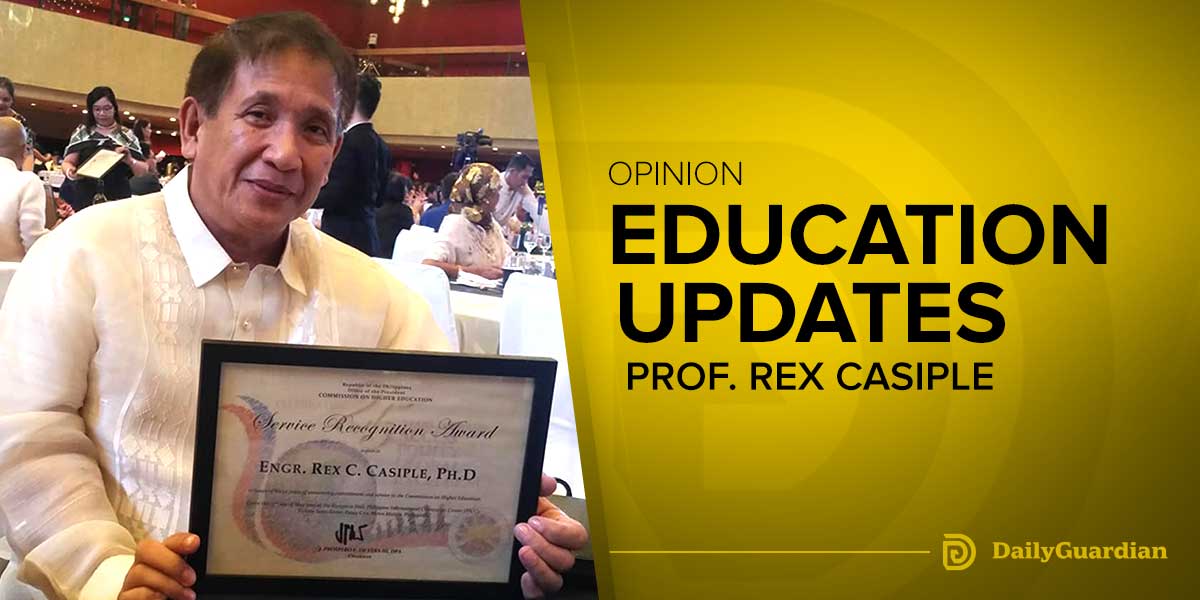 By: Dr. Rex Casiple
By: Dr. Rex Casiple
THE National Disaster Resilience Month (NDRM), formerly called National Disaster Consciousness Month, is celebrated every July through Executive Order No. 29 issued by President Rodrigo Duterte on June 28, 2017.
The essence of the month-long observance is to promote public awareness of natural hazards and disseminate information on the steps to be undertaken to mitigate the adverse effects of such hazards.
The NDRM shall be observed by undertaking various activities relative to disaster resilience covering the four thematic areas, namely: Disaster Prevention and Mitigation, Disaster Preparedness, Disaster Response, and Disaster Rehabilitation and Recovery.
This year’s NDRM celebration carries the theme: “Kahandaan sa Sakuna’t Peligro Para Sa Tunay na Pagbabago.
As part of the celebration, schools have undertaken relevant activities which emphasized Disaster Risk Reduction and Management (DRRM) such as but not limited to posting of National Disaster Resilience Month Poster, integrating in-class discussion topics on preparedness, mitigation, and prevention during the rainy days or stormy days, conducted symposium or forum on DRRM, and conducted related activities to ensure heightened awareness, consciousness, and mitigation among school administrators, teachers, personnel and students.
In some areas of the country, there were hanging of streamers bearing this year’s theme; conduct of Geohazard Mapping and Assessment; conduct of lectures on “Understanding Geohazards and Disaster Preparedness“, understanding of Geohazard Maps, Disaster Risk Reduction and Mitigation Methodologies, etc. Climate change is a worldwide phenomenon.
The best defense against calamities caused by climate change is for the public to be vigilant and prepared especially during the months of typhoon; and the cooperation and the readiness of the public to assist each other especially in times of emergencies and disasters.
A month after the NDRM celebration, on August 3, 2019, eight (8) teachers among 28 died in Iloilo-Guimaras sea tragedy after three passenger boats capsized due to “pugada” (squall). Pugada is a natural phenomenon characterized by sudden strong wind and rain. Five of the eight teachers were graduate school students processing their requirements for the comprehensive examination.
The following week, heavy rains and strong winds produced by the southwest monsoon or “habagat”, enhanced by typhoon “Hanna,” hit Iloilo City. Classes in the City were suspended for three days due to strong winds and heavy rains.
Unlike in the past, this time the declaration was timely that no panic and heavy traffic occurred in the City. No innocent school children in the elementary and secondary levels were stranded.
The suspension was in compliance with Executive Order No. 66, re: “Prescribing Rules on the Cancellation or Suspension of Classes and work in the Government Offices Due to Typhoons, Flooding, Other Weather Disturbances, and Calamities.”
In the absence of typhoon signal warnings, localized cancellation or suspension of classes and work in government offices may be implemented by local chief executives, as chairpersons of the Local Disaster Risk Reduction and Management Council (LDRRMC) concerned, in coordination with PAGASA and the National Disaster Risk Reduction and Management Council (NDRRMC), specifically in flood-prone or high risk areas.
The declaration of “preventive suspension” kept our children in school safe from the expected flood, strong winds and heavy rains regardless of typhoon signals declared in the area. It is easy and possible for our school authorities to do make-up classes to recover the lost school days due to calamities than to recover the lost lives of the stranded pupils/students due to failure to declare no classes on time of the said calamities.
Lastly, there is a need to review the capability of our rescue team in the sea during times of calamities and emergencies. The tragedy that happened in the Iloilo Strait served as a lesson for us to create a well-trained rescue team equipped with sophisticated rescue equipment.



















